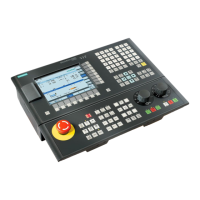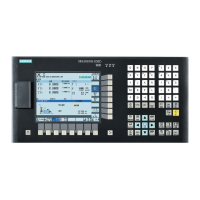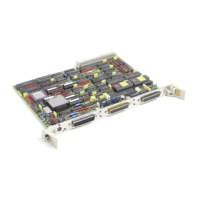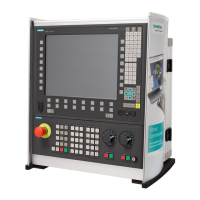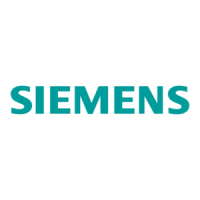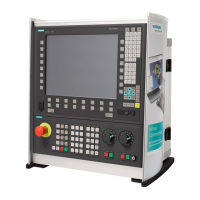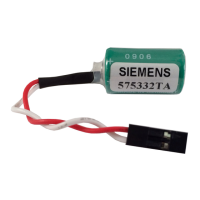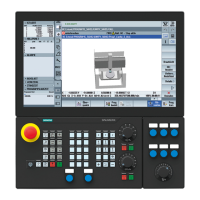Programming and Operating Manual (Milling)
6FC5398-4DP10-0BA6, 09/2017
105
G75 Fixed point approach
FP=<n> Fixed point that is to be approached. The fixed point number is specified: <n>
Value range of <n>: 1, 2, 3, 4
MD30610$NUM_FIX_POINT_POS should be set if fixed point number 3 or 4 is to be used.
If no fixed point is specified, fixed point 1 is approached automatically.
X=0 Y=0 Z=0 Machine axes to be traversed to the fixed point.
Here, specify the axes with value "0" with which the fixed point is to be approached simultaneou
s-
ly.
Each axis is traversed with the maximum axial velocity.
; Approa ch fixed poin t 1 in Z
; Approach fixed point 2 in X and Y, e .g. to
change a tool
The programmed position values for X, Y, Z (any value, here = 0) are ignored, but must still be written.
Reference point approach: G74
Fu n ctionality
The reference point can be approached in the NC program with G74. The direction and speed of each axis are stored in
machine data.
G74 requires a separate block and is non-modal. The machine axis identifier must be programmed!
In the block after G74, the previous G command of the "Interpolation type" group (G0, G1,G2, ...) is active again.
The programmed position values for X, Y, Z (any value, here = 0) are ignored, but must still be written.
Acceleration control and exact stop/continuous path
11.7.1
Acceleration pattern: BRISK, SOFT
BRISK
The axes of the machine change their velocities using the maximum permissible acceleration value until reaching the final
velocity. BRISK allows time-optimized working. The set velocity is reached in a short time. However, jumps are present in
the acceleration pattern.
The axes of the machine accelerate along a non-linear, constant characteristic until reaching the final velocity. With this jerk-
free acceleration, SOFT allows for reduced machine load. The same behavior can also be applied to braking procedures.
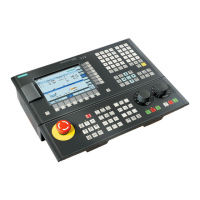
